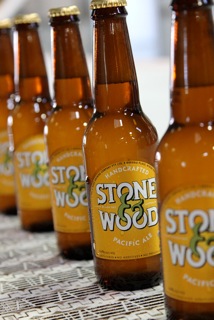
A rose by any other name
Apparently the phrase “beer style” to describe a particular type of beer was first used 30 years ago by beer writer Michael Jackson. Just like any form of categorisation, a style description is important if only so that you can order something from a list with a reasonable expectation of what you are going to receive.
However, too slavish adherence to concepts of style can be equally problematic. My brain knows there are technical and historical differences between a stout and a porter, but it seems that my tongue is ignorant of them – and isn’t even sure it matters.
The US developed Beer Judge Certification Program style guidelines nominate 23 distinct style, ranging from Light Lager through to Smoke-flavoured/ wood-aged beer, and something in the order of 100 sub-styles.
But when you read that a Lite American Lager is meant to taste:
Crisp and dry flavour with some low levels of grainy or corn-like sweetness. Hop flavor ranges from none to low levels. Hop bitterness at low level. Balance may vary from slightly malty to slightly bitter, but is relatively close to even. High levels of carbonation may provide a slight acidity or dry “sting.” No diacetyl. No fruitiness.
and that a Premium American Lager is meant to taste:
Crisp and dry flavor with some low levels of grainy or malty sweetness. Hop flavor ranges from none to low levels. Hop bitterness at low to medium level. Balance may vary from slightly malty to slightly bitter, but is relatively close to even. High levels of carbonation may provide a slight acidity or dry “sting.” No diacetyl. No fruitiness.
the obvious question is, “What’s the difference?
And yet, when beers are judged, the style category that a beer is entered into can determine whether the same beer is awarded a gold medal or perhaps none at all.
So what happens then when a brewer creates a beer that does not follow a set style?
In November 2008 a new brewery based in Byron Bay launched with a new beer designed to taste like you had just come off the beach. It conformed to no set style, borrowing loosely from a variety of styles and current brewing trends. It was designed to be interesting but – because the brewery wanted to stay in business – it was also designed to be drinkable and have broad appeal. It was a cloudy, dry-hopped ale and the brewers professed it was to be a draught-only beer.
The brewery was Stone & Wood and the beer was, oddly enough, called Draught Ale.
Jamie Cook, brewing industry veteran and co-owner of Stone & Wood, said their approach was pretty simple.
“As independently minded brewers we don’t want to be limited to brewing beers from an existing style register,” he said.
“There is nothing stopping brewers from developing new approaches, and using new ingredients to create new styles of beer that don’t fit the strict criteria of traditional beer styles.
“That’s the mindset that drives our approach to brewing, and is what led us to develop our ale.”
For eighteen months the draught-only formula was pursued but Jamie says drinkers were constantly asking for the Draught Ale in bottles.
“Rolling out a draught ale in bottles seemed a bit weird but hey, we had a whole bunch of people who knew the beer as Draught Ale, so the same beer out of the tank was put into kegs and bottles and away we went,” Jamie explains.
This also had its problems.
“Ever since we launched our ale, people have continually been asking us, ‘what style of beer is it?’” Jamie said.
The avant garde approach to style means that the beer hasn’t fitted neatly into the confines of beer competition award nominations and so the popular beer isn’t dripping with beer award bling. What’s more, while ‘draught ale’ was handy to describe the beer when it was tap-only, as a style description it became confusing once the beer was in bottles.
So, a new name was sought and the Stone & Wood boys didn’t have far to look for inspiration.
“Our ale deserves a name that speaks to where it is created, its home, a name that helps it establish its own place and its own beer style. The answer has been staring us in the face all along. It’s now called Stone & Wood Pacific Ale.”
“Inspired by our home on the edge of the Pacific Ocean and brewed using all Australian barley, wheat and Galaxy hops, the Pacific Ale is cloudy and golden with a big fruity aroma and a refreshing finish.”
“So when someone asks us ‘what style of beer is it?’, we will simply say, ‘it’s a Pacific Ale’.”
Whether the BJCP style guidelines will ever see a category of Australian Pale Ale added and include the sub-categories Sparkling Ale and Pacific Ale, only time will tell. But if you liked the beer last week, I can safely say that apart from the label, not much will change now that the beer is a whole different style.
*Stone & Wood is a sponsor of Australian Brews News..
___________________________________________________________________
[adrotate group=”1″]




